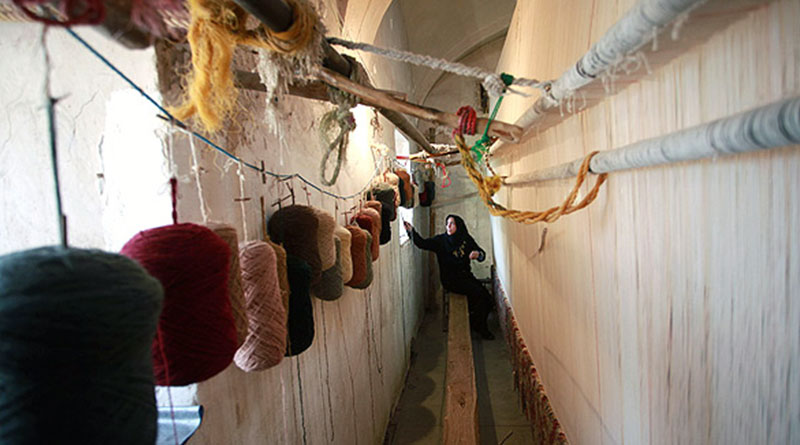The Art of Hand Knotted Carpets: An Exquisite Craft
‘Hand knotted carpets’ represent the pinnacle of textile artistry, blending meticulous craftsmanship with rich cultural heritage. These luxurious creations, often referred to as Persian carpets, are produced with skills that have been passed down through generations, ensuring each piece is a testament to time-honoured traditions and techniques.

Origins and Significance
The term ‘Persian carpets’ encompasses all hand knotted carpets made in Iran. Renowned for their superior quality and intricate designs, Persian carpets are among the most sought-after oriental rugs in the world. The craft of carpet weaving in Iran dates back thousands of years, with each region contributing its own unique style and pattern.
The Making of Hand Knotted Carpets
Hand-knotted carpets are composed of three main elements: the warp, the pile, and the weft. These components work together to create a durable and visually stunning textile.
The Warp: The warp consists of threads that run the length of the carpet, stretched parallel between the horizontal beams of the loom during manufacture. Cotton is typically used for the warp, although nomadic weavers may use wool. In high-end silk and wool carpets, the warp is often made from silk threads, adding to the carpet’s luxurious feel and strength.
The Pile: The pile forms the visible surface of the carpet, consisting of tufts of yarn hand-knotted into the warp threads. These rows of knots run across the width of the carpet. The pile is usually made from wool or silk, or a combination of both, resulting in a soft and resilient surface that can withstand years of use.
The Weft: After each row of knots is added, a thread known as the weft is woven between them to secure the structure and maintain the carpet’s integrity. The weft can be made from cotton, wool, or silk, depending on the carpet type. Typically, two weft threads are woven alternately between each row of knots to ensure durability and stability.
Knotting Techniques
The art of knotting is a crucial aspect of hand-knotted carpets, with techniques that have evolved over millennia. There are two primary types of knots used in oriental carpets: the Turkish or Ghiordes knot and the Persian or Senneh knot.
The Turkish Knot: Predominantly used in Turkey, Azerbaijan, and the Caucasus, the Ghiordes knot is favoured for its ability to create geometric designs. This knotting technique involves looping the yarn around two warp threads and pulling it through the middle, resulting in a symmetrical and robust knot.
The Persian Knot: Mainly found in Iran, the Senneh knot is known for its versatility and is often employed for intricate floral patterns. This knot is tied around a single warp thread, allowing for finer detail and greater flexibility in design.
Dyes and Colours
One of the most striking characteristics of Persian carpets is their vibrant colours. Before the advent of synthetic dyes in the mid-19th century, dyers relied on natural sources to create their hues. Persian dyers became famous for their extensive range of vegetable and animal dyes, achieving colours such as deep reds from cochineal insects and ox blood, and rich blues from indigo plants.
Hand-knotted carpets are more than just decorative floor coverings; they are works of art that embody the history, culture, and craftsmanship of their regions of origin. From the elaborate patterns of Persian carpets to the enduring beauty of natural dyes, these rugs are a testament to human ingenuity and artistic expression. Collectors and enthusiasts value them not only for their aesthetic appeal but also for the stories they tell through their intricate designs and time-honoured techniques. As long as the tradition of hand-knotting continues, these exquisite carpets will remain cherished heirlooms, bridging the past and present with their timeless beauty.
